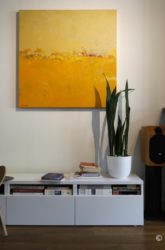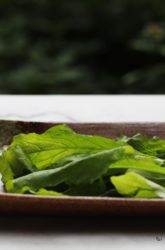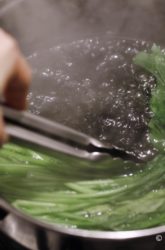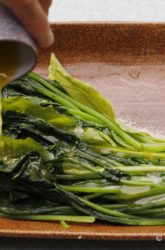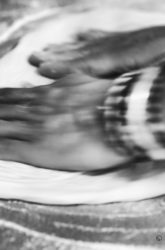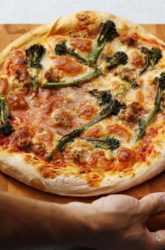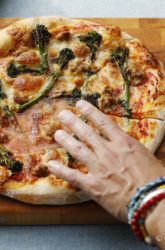The Grain Republic is
the sixth and final column from the series DISH!
In my living room hangs a painting that captures the essence of my impression of this land I call home, Groningen. This is not where I am originally from, but I am of Groningen, nonetheless. I have grown up by lakes, lived by the ocean, by the feet of mountains, and now the plains of the Dutch North work to shape my existence.
From the earliest spring months, when the days finally measure up to the nights, my old, honeybee yellow-and-black racing bike carries me into the heart of this land, its open fields, which, if I’m lucky, are bathed by the most blinding of sunlights. There, the grain and mustard crops meet the sky and compete with each other for sheer brightness and glow. This is what is in my mind when I close my eyes and think of this province: endless fields of flowering mustard crops, not quite ready to pick for the oil their seeds carry, but shimmering under the vast sky. Such is the image of the painting too: a yellow mirage of sky on earth.
In all the places I’ve lived, raapstelen have featured in the markets, restaurants, and kitchens, but, curiously, always under a different guise. In Italy and America, the leaves are eaten with the early tender stems and unopened buds; in Greece, I know them as one of the many varieties of horta, the greens that fill the local pitas or become boiled, dressed salads. In this country, of course, we know them best as toppings for a stamppotje, lightly piquant and fresh.
The merits of a good stamppot notwithstanding, bunches of raapstelen, purchased at the market at every opportunity, usually get treated differently in my kitchen and these are the two most frequent preparations.
Young raapstelen don’t really need much cooking. Trim their stem ends, give them a quick wash, and place them in a steamer basket over boiling water for but a minute, neatly arranged to face the same way, if you can. After you take them out, let them steam dry while you make a thick vinaigrette: in a small jar, mix 3 parts good olive oil to 1 part lemon juice, a good pinch of sea salt, and a little grain mustard to round out the theme. Shake vigorously into a creamy consistency and dress the leaves while still warm. Arrange elegantly on a platter, stems on one end, tops on the other, and garnish with a couple of wedges of lemon.
If you can find them with some unopened buds, so much the better (if you grow them, leave some get to that stage and enjoy them in this recipe). Toss them with olive oil, some chili flakes, a fat clove of garlic sliced thinly, salt and plenty of pepper and use as a topping to a homemade pizza, dotted with some fresh sausage if you like. Baked like this they give the rucola you see so often on pizza these days a run for its money.
Note: the painting that inspired this article is the work of Bart van Oijen, who lives and works in Zutphen with his partner and ceramicist Jente Bagchus.
TEXT TASSOS SARAMPALIS | PHOTOGRAPHY SANDER MARTENS
DISH is the brainchild of two friends, Sander Martens and Tassos Sarampalis. Though they come from very different parts of the world, they are both inspired by food; Sander as a photographer and Tassos as food writer. Together, they explore the taste and nature of food, visually, culturally, and artistically, influenced by their international and local experiences. The column is published every two months in Villa d’Arte (Kookkunst).
© Sander Martens & Tassos Sarampalis, all rights reserved

